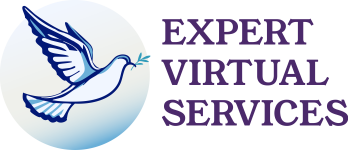With technology and changing times, many more people are working remotely. While it’s nice to be working in your pajamas at home, spending more time with your pets and family, you still have to be productive. We know that checking and responding to email is a time-consuming part of our workday. Studies show the average American worker can spend approximately five hours per day on business and personal emails! Remote workers often use email as their primary ways to communicate, so their email usage may increase. These email management tips will help you be more productive as a remote worker.
Use Multiple Email Accounts
It may sound like you are creating more work for yourself, but this tip works because it allows you to have better focus and organization. Many email providers offer free services, so you can get as many email accounts as you want. Gmail, Outlook, and iCloud are some of the most popular free email providers. We often get overwhelmed by all of the clutter in our inbox, so having separate email accounts can help alleviate this problem. You can protect your primary email account from getting cluttered and allow you to be more organized and save time by knowing exactly where to find what you are looking for.
- Use your primary email account only for work. Do not use this email address when signing up for freebies on websites or signing up to get retail store coupons and such.
- Use another email account for personal use, such as your social media site notifications, the retail store coupons, entertainment, etc.
- Some people have a third email account for things such as applying for jobs or having a side hustle. This email account would be different from your primary email account and your personal email account in which you would solely use this one for keeping in touch with potential employers or for clients in your side hustle.
Aim For Inbox Zero
You don’t have to commit to an empty inbox fully. However, these expert tips on how to achieve inbox zero will help you develop an email management system of organization that will help you save time. Like using multiple email accounts to keep your inbox from too much clutter, the tips on unsubscribing from newsletters and shopping websites that you no longer use will help keep unwanted emails from going into your inbox. For emails you want to retain for your records, setting up folders with categories and labels will save you time when you need to search for a particular email.
Set Up Email On Your Phone
If you haven’t already downloaded the app for your email providers onto your smartphone, you are missing an opportunity to save a great deal of time. Rather than spend so much of your workday checking email, you could be checking email in small increments of time, such as when you are waiting in line at a store or sitting in traffic, or riding public transportation. Having your email app on your phone is also a great tip for when you are on the go and need to quickly send a document or search for an email you need when you are not in your office.
Create Email Templates
If you are required to send the same type of emails out multiple times a day, you can save a lot of time by having email templates. Gmail has a template feature as we all Outlook templates. With just a few clicks using templates, you can send more emails faster and use that free time for better things!
Archive Emails Before You Delete Them
The number one reason people keep too many emails in their inbox is that they don’t know if they should delete it or keep it in a folder. If you have to overthink it, then there is another solution. By archiving an email, you remove it from your inbox, but it is easily retrievable if you eventually need to find it again. Archiving emails does not save space in your email provider’s space requirements. However, it allows you to set the email aside until you figure out what you want to do about it.
Working from home doesn’t mean that you are always working, so setting aside specific times in your day to focus on your email management will help with work-life balance as well. Don’t get caught in the muddy waters drowning in email chaos.

